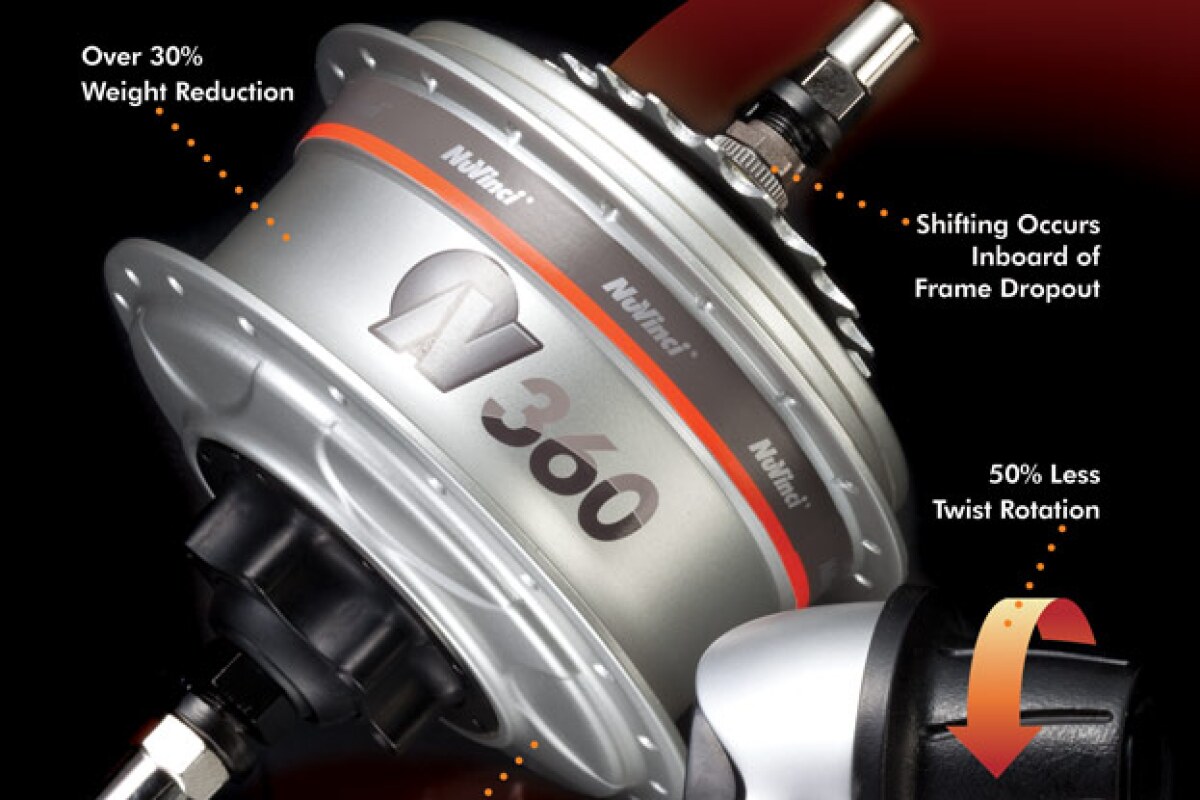Three years ago, Fallbrook Technologies introduced its NuVinci Continuously Variable Planetary (CVP) N170 transmission for bicycles. The device created something of a stir in the cycling community, as it replaces traditional derailleurs with a rear hub containing metal spheres, plus it also replaces distinct gears with a continuously variable system of transmitting mechanical power – kind of like comparing a three-setting desk lamp to one with a dimmer switch. Riders can change gears even when not pedaling, they don’t need to worry about improper chainring/cog combinations, and the fiddly bits aren’t out in the open where the dirt can get at them. The N170 is heavier than a conventional derailleur system, which is why you don’t see it much on bikes other than cruisers. That could change, however, with this Wednesday’s announcement of the NuVinci N360 transmission. Fallbrook claims it has all the good points of the N170, but is 30 percent lighter and 17 percent smaller.
Without going into too much detail, the CVP incorporates rotating, tilting metal balls positioned between the input and output components of the transmission. Tilting the balls via a handlebar-mounted twist shifter changes their contact diameters and varies the speed ratio. The N360 has six balls, as opposed to the N170’s eight, which is a big part of what makes it smaller and lighter.
Fallbrook states that the N360 has an increased ratio range of 360 degrees... it’s not immediately clear what that means, technically-speaking, but the result is more ratios to choose from. It’s also said to be smoother and easier to shift, and to require 50 percent less twist rotation to go from the lowest to the highest ratios. Because the hub interface is now housed inboard from the bike’s rear dropout, the transmission should stay cleaner and be better protected. The company also claims that due to the hub’s sealed design, it should not require any maintenance or adjustments.
While Fallbrook is particularly interested in getting their product on commuter and electric bikes, one can’t help but wonder how it would do on a road or mountain bike. Well, according to the N360’s spec sheet, it weighs 2.45kg (86.4 ounces). By contrast, the combined weight of Shimano SLX front and rear derailleurs, shifters, freehub and cassette comes out to about 1.3kg (46 ounces).
So weight-wise at least, there’s still a ways to go before it usurps the derailleur. If the N360 lives up to its hype, however, those extra thousand grams could be worth it.





